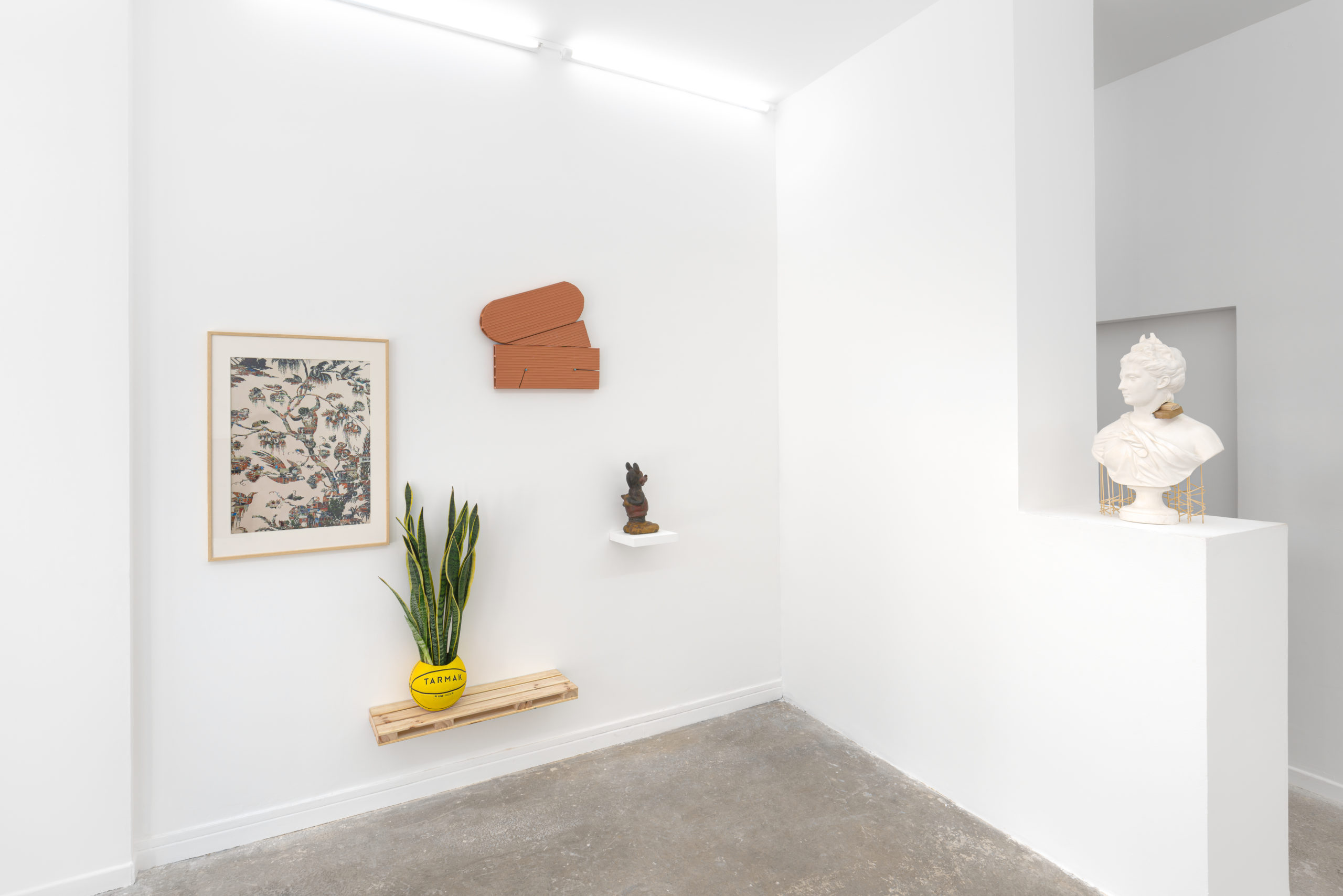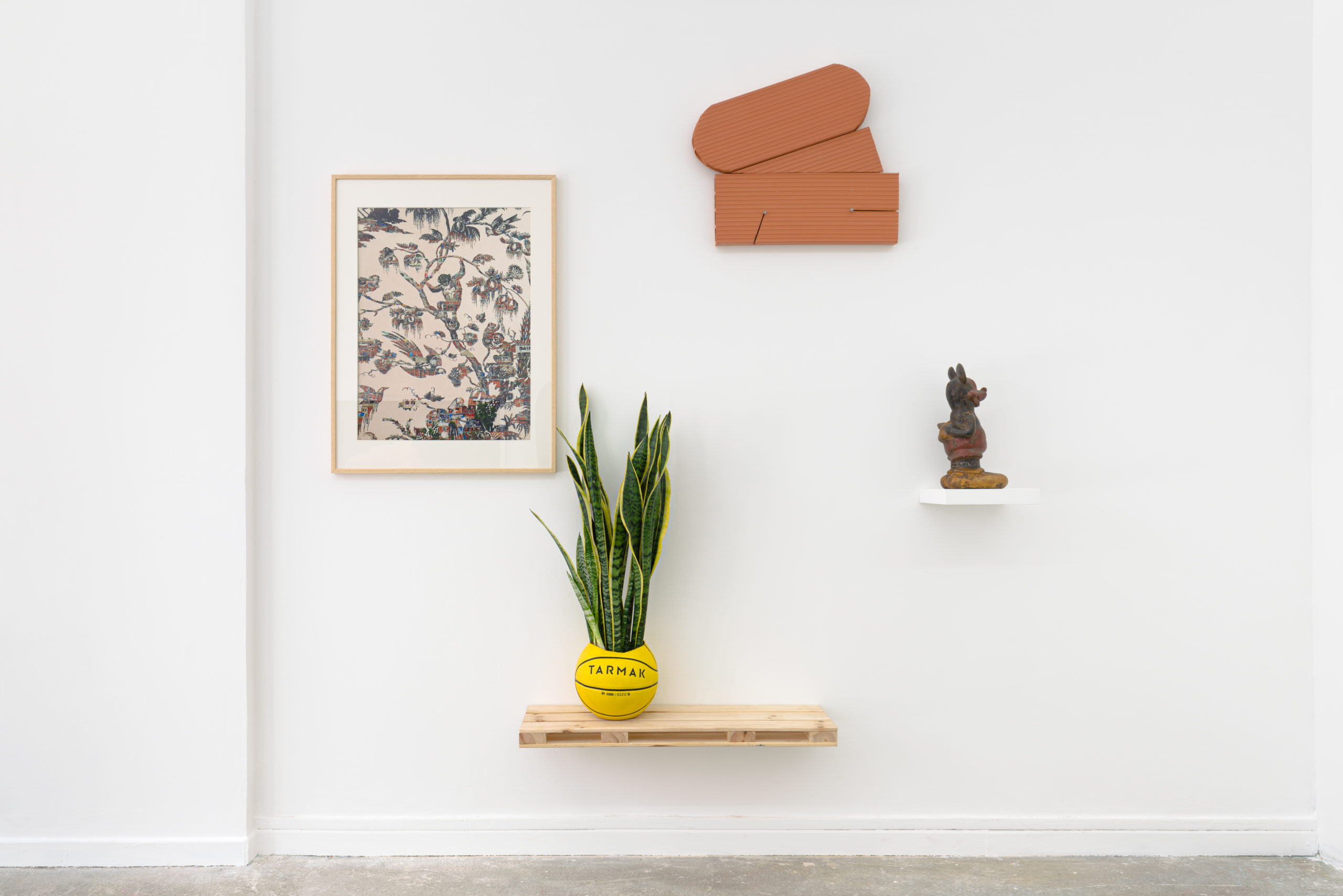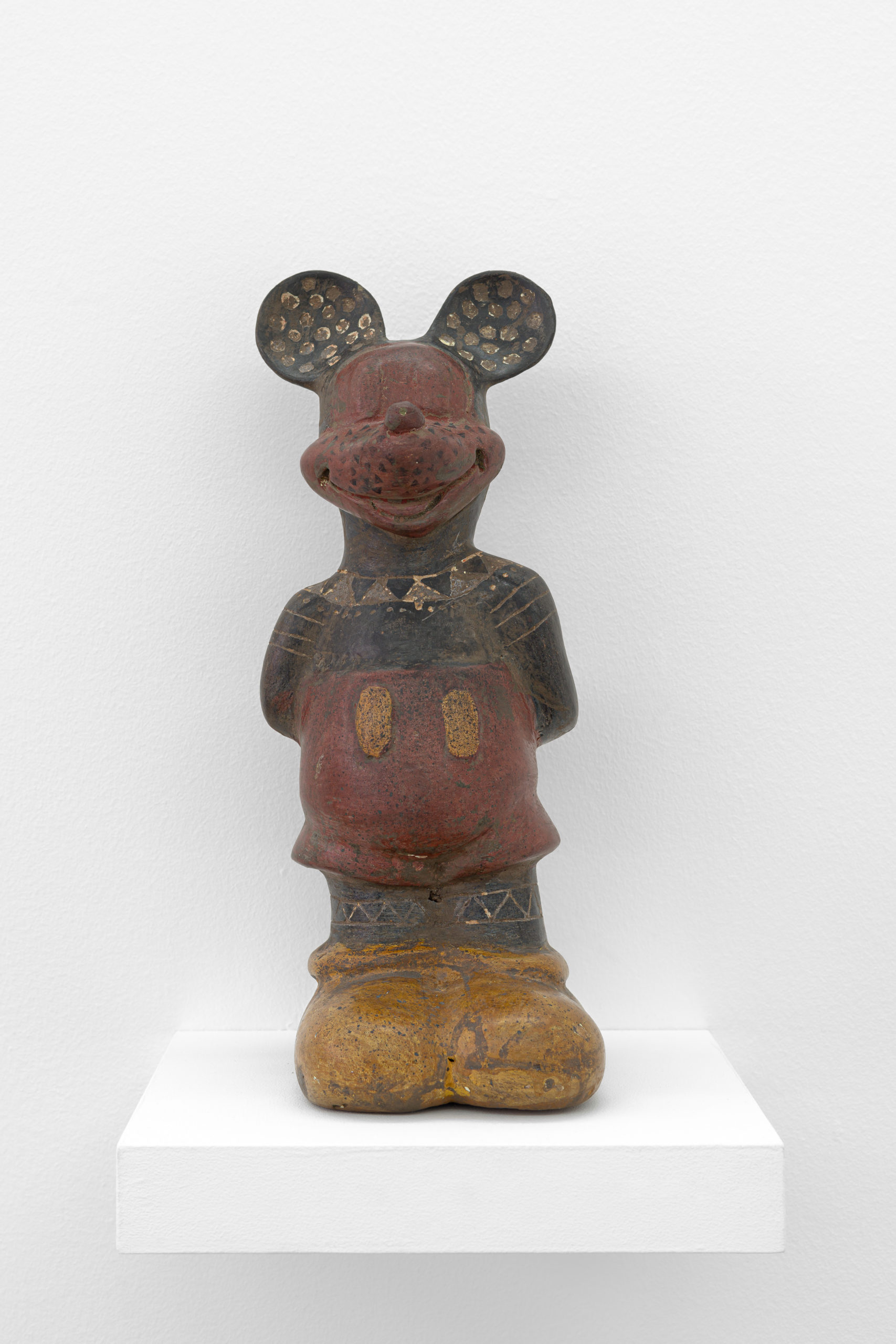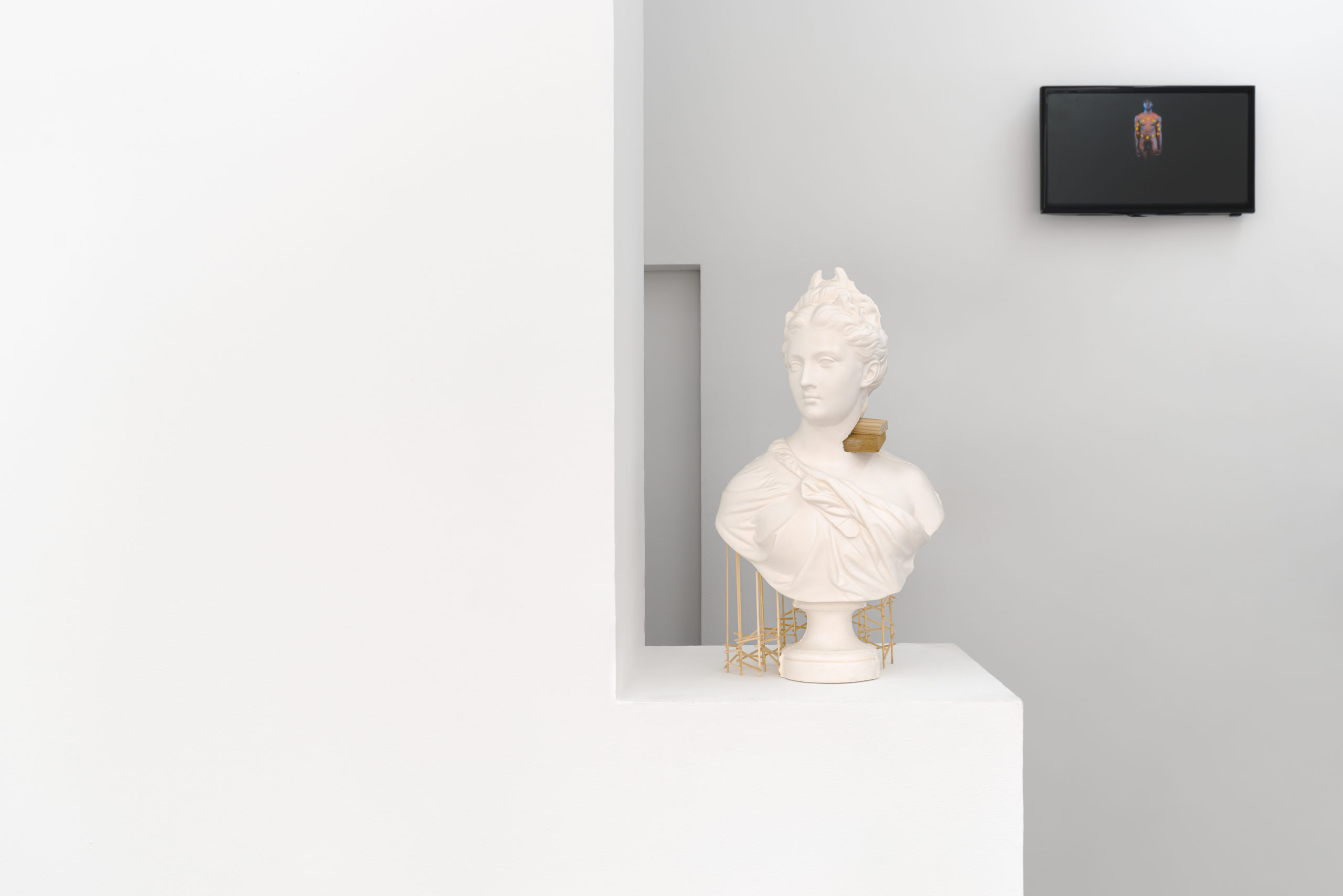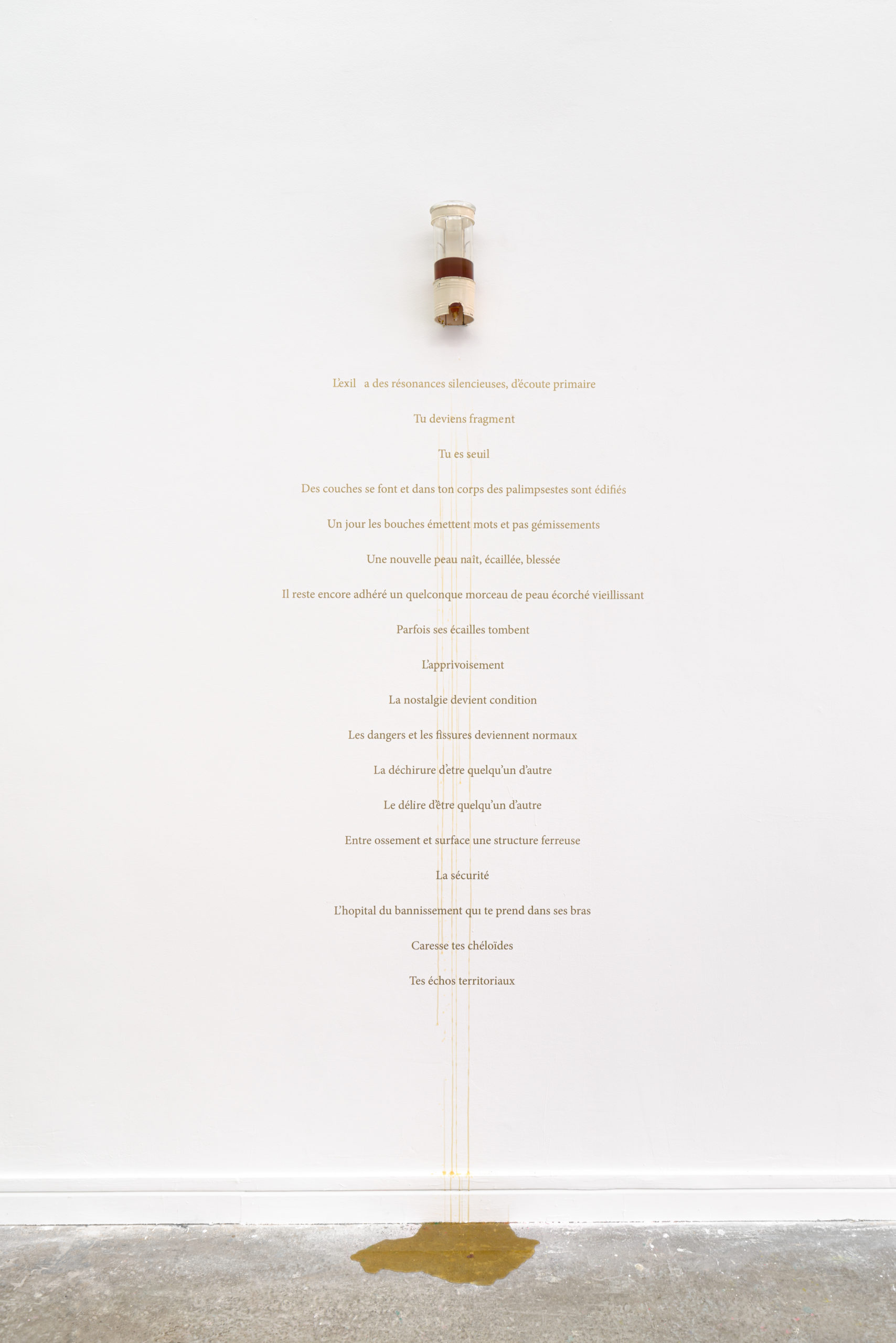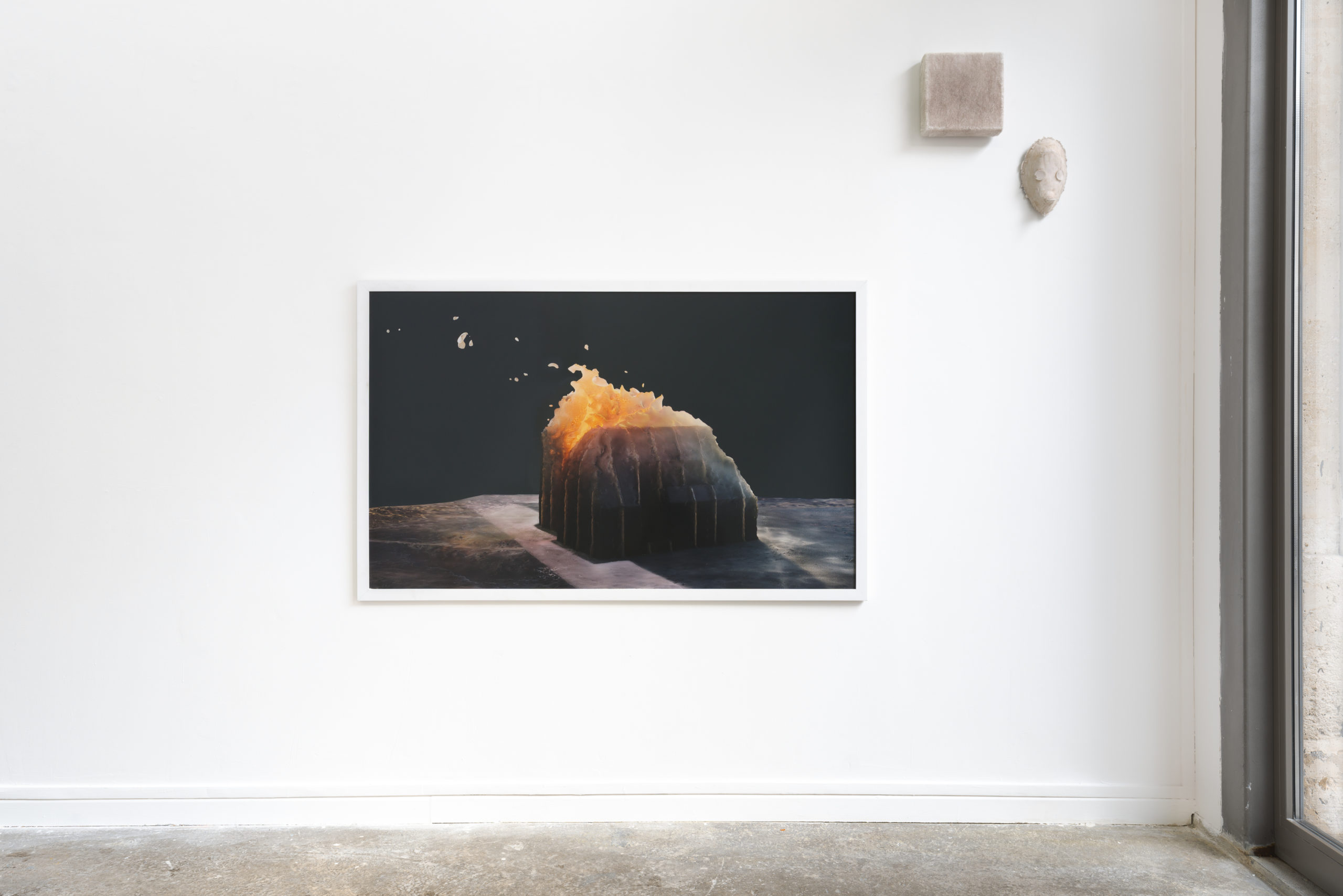NAYARI CASTILLO – KENNY DUNKAN – RADAMÉS ‘JUNI’ FIGUEROA – PEPE LÓPEZ – CARLOS MARTIEL – NADÍN OSPINA – OSCAR ABRAHAM PABÓN – NELSON PERNISCO – EMMANUEL RIVIÈRE – PAUL SOUVIRON
«I marry white culture, white beauty, white whiteness. When my restless hands caress those white breasts, they grasp white civilization and dignity and make them mine.1»
A couple of weeks ago, we were subjugated by the image of Notre-Dame Cathedral in flames. The scene was breathtakingly beautiful: both sublime and devastating. Seeing the spire fall was like seeing European civilization topple; the end of an epoque and the birth of a new cycle. As an old friend who had lived through the war said: «Notre-Dame and our culture must change. If they hadn’t gone up in flames themselves, we would have had to burn them down. « How come, throughout the world, this strange phenomenon provoked intense pain akin to the losing of a limb ? Why should seeing the images of this spire fall be any more dramatic than the loss of a shabono in Amazonia, or of the Great Mosque of Aleppo ?
In reality, beauty has no nationality and we all experience void in our cultural spaces as an intimate process between the universal symbol of memory and the construction of being. Prioritizing, or not, European civilization is not the question. What interests us lies elsewhere: our relationship to icons. Paul B. Preciado suggested turning these ruins into a punk monument – the last of a dying world, and the first of a new one beginning – but a veritable cultural wound exists that inhabits the minds of millions of people who have nothing to do with Europe, and who saw their idols come crashing down one spring afternoon.
Evoking this spirit of reappropriation of Other’s symbols, the «Broken Idols» exhibition borrows the title of a novel by Manuel Díaz Rodríguez. The main character, Alberto Soria, lives in Paris, but is forced to return to the Caribbean, unhappily, dissatisfied and disillusioned. His ideals gradually fade in a disappointing world and a society that does not understand his passion for Europe. Here, the intention is not to promote the destruction of icons, but to reflect on this fascinating cultural space created by deconstructing the purity of the Eurocentric icon by blending it with each and every one’s personal history, and combining it with the construction of all of our identities.
The exhibition brings together artists who, in an iconoclastic spirit, deconstruct and propose a hybrid cultural space. The loss of an ideal, which reveals multiple layers, denounces a romance between the centre and the margin, illustrating Franz Fanon’s reflection in «Black Skin, White Masks». The pieces selected are little time bombs that attempt to decipher the symbolism of the monument. They are experiences in which the icons of dominant culture are used in the margins, or vice versa, as a passport to social mobility. On show are nine works that combine nativism and internationalism in a troubling blend of exoticism, nostalgia, and uprooting.
Forming a backdrop to the exhibition is a «tropical» tapestry, revisiting the French decorations of the 19th century. Created by Pepe Lopez in the spirit of the Universal Exhibition, it evokes the rich French exoticism, decorated with monkeys and palm trees that conceal the image of Caracas’ dangerous favelas. A neo-classical bust mounted on a pile evokes the idea of the current crisis in Europe, and Carlos Martiel’s performance confronts us with the powerful image of his black body as he rips from his skin gold stars, the symbol of the European community.
Emmanuel Rivière transforms the interior void of a ritual African mask into a white, immaculate volume. Nadin Ospina, presents one of his best-known archeological objects: a Mickey Mouse made using ancestral techniques to modelize the pre-Hispanic gods. And Nelson Pernisco safeguards images of rebellions in which the monuments are destroyed by the community. Like the traces of paint in an old building, each work is a journey and an immersion in the paradoxical games that compose our icons; they are an invitation to turn the page, to watch our bunkers burn, and to let honey trickle on our wounds.
Rolando J. Carmona, april 2019

